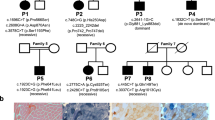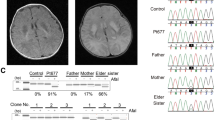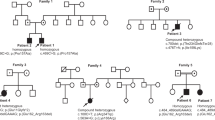Abstract
Aminoacylation of transfer RNAs (tRNAs) is essential for protein synthesis. A growing number of human diseases correlate with point mutations in tRNA genes within the mitochondrial genome. These tRNAs have unique sequences that suggest they have fragile structures. However, the structural significance of pathology-related tRNA mutations and their effects on molecular function have not been explored. Here, opthalmoplegia related mutants of a human mitochondrial tRNA have been investigated. Each mutation replaces either an A-U or G-C pair in the predicted secondary structure with an A-C pair. Aminoacylation of each mutant tRNA was severely attenuated. Moreover, each strongly inhibited aminoacylation of the wild type substrate, suggesting that the effects of these mutations might not be bypassed in the potentially heteroplasmic environment of mitochondria. The function of mutant tRNAs was rescued by single compensatory mutations that restored Watson-Crick base pairing and reintroduced stability into regions of predicted secondary structure, even though the pairs introduced were different from those found in the wild type tRNA. Thus, functional defects caused by a subset of pathogenic mutations may result from the inherent structural fragility of human mitochondrial tRNAs.
This is a preview of subscription content, access via your institution
Access options
Subscribe to this journal
Receive 12 print issues and online access
$189.00 per year
only $15.75 per issue
Buy this article
- Purchase on Springer Link
- Instant access to full article PDF
Prices may be subject to local taxes which are calculated during checkout



Similar content being viewed by others
References
Schon, E.A., Bonilla, E. & DiMauro, S. J. Bioenerg. Biomem. 29, 131–149 (1997).
Michikawa, Y., Mazzucchelli, F., Bresolin, N., Scarlato, G. & Attardi, G. Science 286, 774–779 (1999).
Bonilla, E. et al. Biochim. Biophys. Acta. 1410, 171–182 (1999).
Cortopassi, G.A. & Wong, A. Biochim. Biophys. Acta. 1410, 183–193 (1999).
MITOMAP: a human mitochondrial genome data base. Center for Molecular Medicine, Emory University, Atlanta, GA, USA. http://www.gen.emory.edu/mitomap.html (2000).
King, M.P., Koga, Y., Davidson, M. & Schon, E.A. Mol. Cell. Biol. 12, 480–490 (1992).
Enriquez, J.A., Chomyn, A. & Attardi, G. Nature Genet. 10, 47–55 (1995).
Martin, N. In tRNA: Structure, biosynthesis and function (Söll, D. and RajBhandary, U.L.), 127–140 (American Society for Microbiology, Washington, DC; 1995).
Steinberg, S., Leclerc, F. & Cedergren, R. J. Mol. Biol. 266, 269–282 (1997).
Giege, R., Sissler, M. & Florentz, C. Nucleic Acids Res. 26, 5017–5035 (1998).
Giege, R., Puglisi, J.D. & Florentz, C. Prog. Nucl. Acid Res. Mol. Biol. 45, 129–206 (1993).
Chinnery, P.F., Johnson, M.A., Taylor, R.W., Durward, W.F. & Turnbull, D.M. Neurology 49, 1166–1168 (1997).
Silvestri, G., et al. Biochem. Biophys. Res. Commun. 220, 623–627 (1996).
Taylor, R.W., et al. Biochem. Biophys. Res. Commun. 243, 47–51 (1998).
Taniike, M. et al. Biochem. Biophys. Res. Commun. 186, 47–53 (1992).
Merante, F., Myint, T., Tein, I., Benson, L. & Robinson, B.H. Hum. Mutat. 8, 216–222 (1996).
Casali, C. et al. Biochem. Biophys. Res. Commun. 213, 588–593 (1995).
Tanaka, M., et al. Lancet 336, 1452 (1990).
Santorelli, F.M., et al. Biochem. Biophys. Res. Commun. 216, 835–840 (1995).
Maglott, E.J., Deo, S.S., Przykorska, A. & Glick, G.D. Biochemistry 37, 16349–16359 (1998).
Nureki, O., et al. J. Mol. Biol. 236, 710–724 (1994).
Degoul, F., et al. Hum. Mol. Genet. 7, 347–354 (1998).
Zuker, M., Mathews, D. & Turner, D. In RNA biochemistry and biotechnology (eds, Barciszewski, J. & Clark, B.), 11–43 (Kluwer Academic Publishers, Norwell, Massachusetts; 1999).
Takai, D., Isobe, K. & Hayashi, J. J. Biol. Chem. 274, 11199–11202 (1999).
Enriquez, J.A., Cabezas-Herrera, J., Bayona-Bafaluy, M.P. & Attardi, G. J. Biol. Chem. 275, 11207–11215 (2000).
Fechter, P., Rudinger, J., Giege, R. & Theobald-Dietrich, A. FEBS Lett. 436, 99–103 (1998).
Shiba, K., et al. Proc. Natl. Acad. Sci. USA 91, 7435–7439 (1994).
Schimmel, P., Soll, D. & Abelson, J. (eds.). Transfer RNA: structure, properties, and recognition, 519 (Cold Spring Harbor Laboratory, Cold Spring Habor, New York; 1979).
Acknowledgements
This work was supported by the National Institutes of Health and by a fellowship from the National Foundation for Cancer Research. S.O.K. was a NIH postdoctoral fellow. S.V.S. acknowledges an operating grant from Medical Research Council of Canada and a fellowship from le Fonds de la Recherche en Santé du Québec. We would like to acknowledge Cubist Pharmaceuticals and K. Shiba (Japanese Foundation for Cancer Research, Tokyo) for recombinant materials for the expression of human mitochondrial IleRS.
Author information
Authors and Affiliations
Corresponding authors
Rights and permissions
About this article
Cite this article
Kelley, S., Steinberg, S. & Schimmel, P. Functional defects of pathogenic human mitochondrial tRNAs related to structural fragility. Nat Struct Mol Biol 7, 862–865 (2000). https://doi.org/10.1038/79612
Received:
Accepted:
Issue Date:
DOI: https://doi.org/10.1038/79612
This article is cited by
-
Role of Mutations of Mitochondrial Aminoacyl-tRNA Synthetases Genes on Epileptogenesis
Molecular Neurobiology (2023)
-
The expanding world of tRNA modifications and their disease relevance
Nature Reviews Molecular Cell Biology (2021)
-
Next-generation sequencing profiling of mitochondrial genomes in gout
Arthritis Research & Therapy (2018)
-
The emerging complexity of the tRNA world: mammalian tRNAs beyond protein synthesis
Nature Reviews Molecular Cell Biology (2018)
-
Mitochondrial transcript maturation and its disorders
Journal of Inherited Metabolic Disease (2015)



